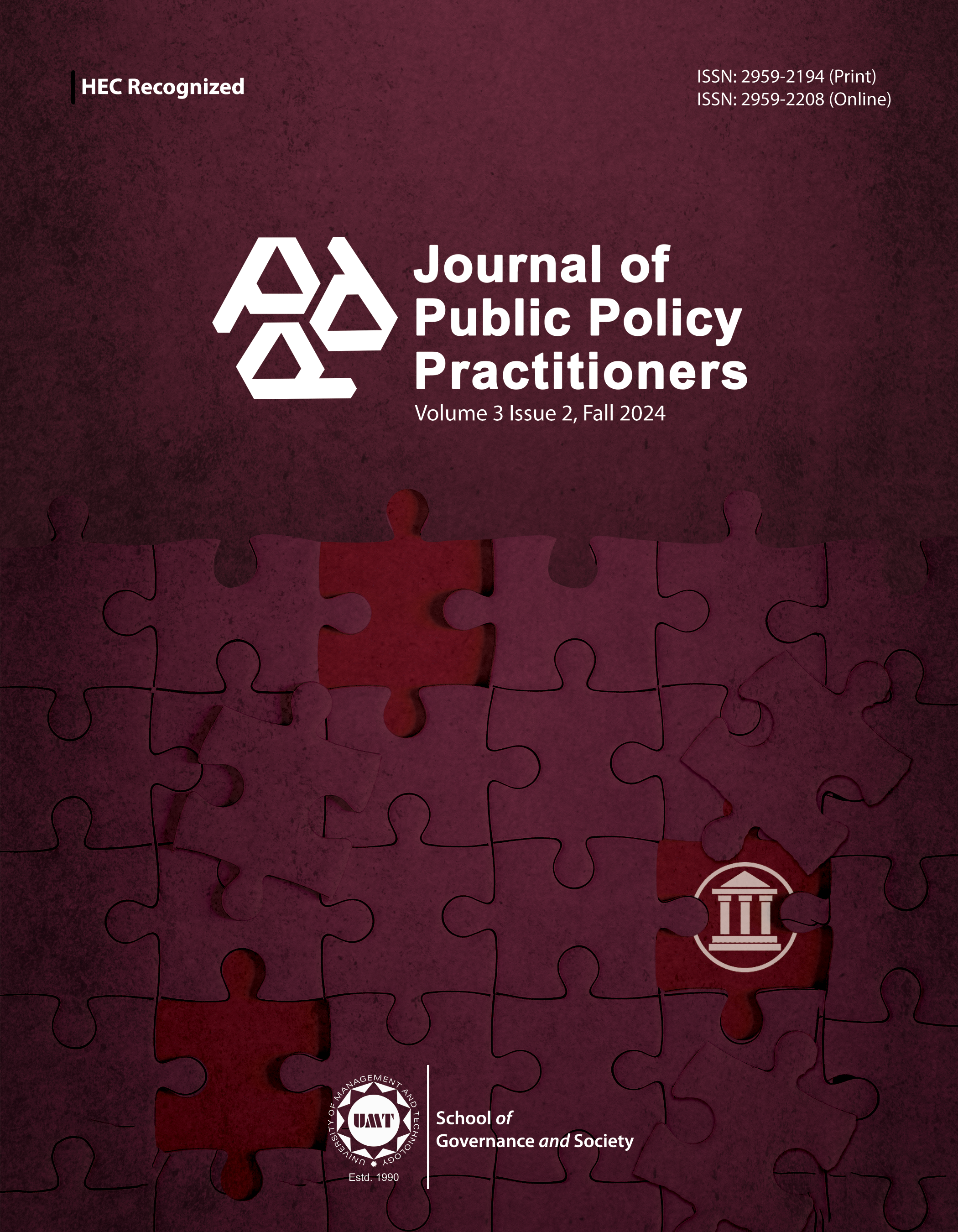Food Security Challenges in a Post-Productivist Agricultural Development Model in Pakistan
Abstract
 Abstract Views: 0
Abstract Views: 0
The further liberalization of wheat in Pakistan is being advocated on the premise that the previous model-centred around the minimum support price procurement by the government, is inefficient. The efficiency in wheat market will better address the welfare needs of ordinary consumers, with additional support from Benazir Income Support program and utility stores. Pakistan is about to enter in a new phase of manufactured food inflation. This phenomenon could be better understood by examining the last five years of the wheat policy as an example of capitalist operation. This study examines the policies and practices of wheat market in Pakistan over the last five years and their implications on food security and social market economy of wheat. Instead of responding to the excesses of neoliberalism by strengthening social market economy of wheat, we are set to expose a majority of the household to the full force of market, endangering food security at a large scale. This capitalist operation however, could not be effectively confronted by bringing back the old inefficient system. The findings of the study conceptualise the relationship between rising food insecurity in Pakistan and the ongoing deepening of market-oriented reforms in the wheat market. The research community in Pakistan needs to imagine new ways to realize the objectives of a social economy, as farmers risk losing the value they create to speculators and other investors in the supply chain. In an environment of post-productionism and hyper-capitalism, the value produced by a weak economic actor is likely to fall prey to the moneyed and more powerful entities unless they operate within a well-functioning social market economy.
Downloads
References
Aftab, A., Ahmed, A., & Sacrpa, R. (2021). Farm households perception of weather change and flood adaptations in Northern Pakistan. Ecological Economics, 182, Article e106882. https://doi.org/10.1016/j.ecolecon.2020.106882
Burch, D., & Lawrence, G. (2009). Towards a third food regime: Behind the transformation. Agriculture and Human Values, 26, 267–279. https://doi.org/10.1007/s10460-009-9219-4
Food and Agriculture Organization of United Nation. (2023). The state of food security and nutrition in the world 2023: Urbanization, agrifood systems transformation and healthy diets across the rural–urban continuum. http://openknowledge.fao.org/items/445c9d27-b396-4126-96c9-50b335364d01
Finnerty, S. (2023). An analysis of the association between food insecurity and violent crime in Georgia in 2020 [Master thesis, Georgia State University]. Scholarworks. https://scholarworks.gsu.edu/iph_theses/800/
Food and Agriculture Organization of United Nation. (n.d.). FAOSTAT. Retrieved July 22, 2024 from https://www.fao.org/faostat/en/#data
Food and Agriculture Organization of United Nation. (2009). Agro-Value chain analysis and development - The UNIDO approach. https://www.fao.org/sustainable-food-value-chains/library/details/en/c/266279/
Food Security Information Network. (2023). Global report on food crises 2023. https://www.fsinplatform.org/sites/default/files/resources/files/GRFC2023-compressed.pdf
Gereffi, G., & Fernandez-Stark, K. (2011). Global value chain analysis: A primer. Center on Globalization, Governance & Competitiveness (CGGC), Duke University.
Gilbert, C. L. (2010). How to understand high food prices. Journal of Agricultural Economics, 61(2), 398–425.
IPES-Food. (2017, October 16). Too big to feed: Exploring the impacts of megamergers, concentration, concentration of power in the agri-food sector. https://ipes-food.org/report/too-big-to-feed/
Khan, A. S. (2014), Pakistan’s food security from wheat value chain perspective [Unpublished doctoral dissertation]. University of Auckland.
Mamabolo, M. A., Sebola, M. P., & Tsheola, J. P. (2021). The economics of communal smallholder farming within South Africa’s historical agricultural structure. Journal of Global Business & Technology, 17(2), 81–97.
Manogna, R. L., & Kulkarni, N. (2024). Does the financialization of agricultural commodities impact food security? An empirical investigation. Borsa Istanbul Review, 24(2), 280–291. https://doi.org/10.1016/j.bir.2024.01.001
Prause, L., Hackfort, S., & Lindgren, M. (2021). Digitalization and the third food regime. Agriculture and Human Values, 38, 641–655. https://doi.org/10.1007/s10460-020-10161-2
Sen, A. (1981). Poverty and famines: An essay on entitlement and deprivation. Oxford University Press.
Shand, H., & Wetter, K. J. (2019). Plate tectonics: Mapping corporate power in big food: Corporate concentration by sector and industry rankings by 2018 revenue. ETC Group. https://etcgroup.org/sites/www.etcgroup.org/fles/fles/etc_platetechtonics_a4_nov2019_web.pdf
Streeten, P. (1987). Towards a country and crop typology. In P. Streeten (Ed.), What price food? Agricultural price policies in developing countries (pp. 8–10). Palgrave Macmillan UK.
Streeten, P. (1993). Markets and states: Against minimalism. World Development, 21(8), 1281–1298.
Timmer, C. P. (1988). The agricultural transformation. In T. P. Schultz & J. Strauss (Eds.), Handbook of development economics (pp. 275–331). Elsevier.
Copyright (c) 2024 Safdar Sohail

This work is licensed under a Creative Commons Attribution 4.0 International License.







